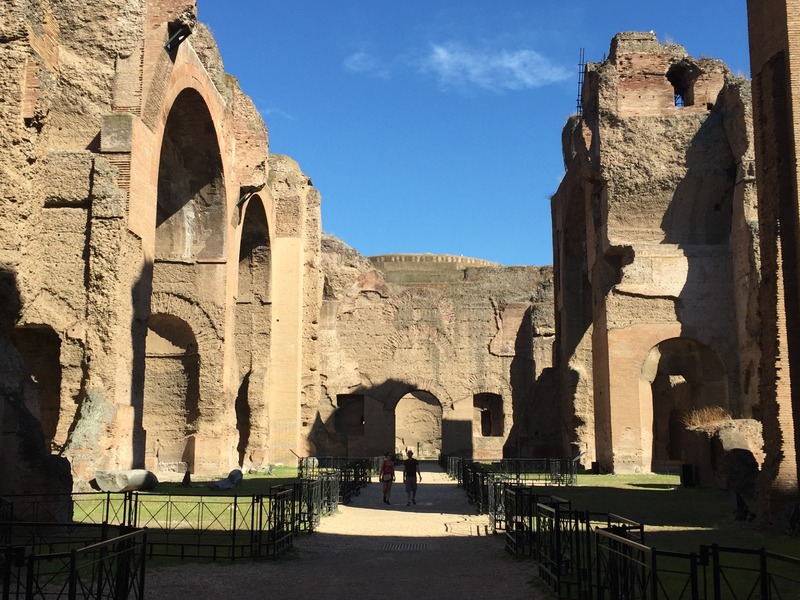Afterlife
After the Baths of Caracalla were abandoned, over time many of its decorative elements were taken, either to be melted and reused, or as spolia and to decorate another building. The baths spent part of their afterlife as land used for cultivation in the 17th and 18th centuries.1 One of the earliest instances of spolia was in the 12th century for use in the Church of Santa Maria in Trastevere.2 Eight capitals on the two column rows of the church are from the Baths of Caracalla. It is possible four of the column bases were also taken from the baths. They were taken around 1140 by Pope Innocent II, most likely from the libraries in the outer structure of the baths.
Then, in the mid-1500s the Pope Paul III excavated the baths hoping to find ancient statues to decorate the Farnese Palace.3 This resulted in the discovery of many large sculptures that are famous today, like the Farnese Herakles. Since then, there have been several excavations and restoration missions in the 19th and 20th centuries. However, spolia were still being taken from the baths during the early 19th century, like when some mosaics of athletes were discovered in 1824 and taken to decorate the Lateran Palace.4
However, since 1937, the baths have housed opera performances and other events during summer evenings.5 Earlier events at the baths did not treat the ruins well: one even had an elephant on the property. Thankfully, modern day performances are more respectful of the ruins.
1Miranda Marvin, "Freestanding Sculptures from the Baths of Caracalla," American Journal of Archaeology 87, no. 3 (1983) 350.
2Dale Kinney, "Spolia from the Baths of Caracalla in Sta. Maria in Trastevere," The Art Bulletin 68, no. 3 (1986): 379.
3Miranda Marvin, "Freestanding Sculptures from the Baths of Caracalla," American Journal of Archaeology 87, no. 3 (1983) 349.
4Phyllis Williams Lehmann, "A Roman Source for Klee's Athlete's Head," The Art Bulletin 72, no. 4 (1990) 639.
5Jason Horowitz, "Opera in Rome Returns To Old Stomping Ground," The New York Times, 2003. Accessed December 18, 2016. http://www.nytimes.com/2003/08/07/arts/opera-in-rome-returns-to-old-stomping-ground.html.

